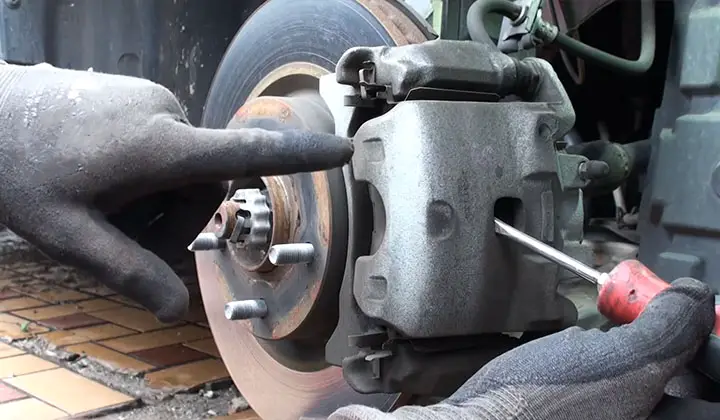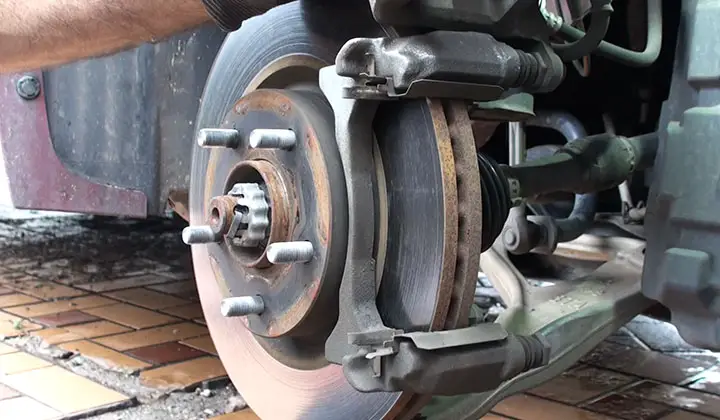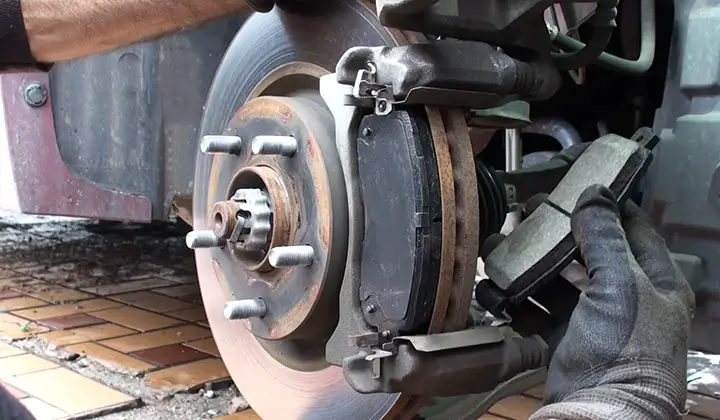Brake pads can wear out over time and need to be replaced in order to stop the car properly. There are a few ways to change brake pads on a 2005 Nissan Altima: Remove the floor mat, undo the four screws that hold it in place, then pull up on the pad.
Open the trunk and remove both front wheels well covers; Slide off the backing plate (the white piece at the bottom of your brake pedal); Unplug two connectors from each side of one half of a new brake pad.
Fit one connector into each hole on top of your old pad; Fit one connector onto each end of the new pad, being sure that they’re lined up correctly – you may have to stretch it slightly if needed.
Finally, replace the backing plate and wheel well covers.
Contents
Brake Pads on 2005 Nissan Altima
Brake pads are an important part of car maintenance and should be replaced when they show signs of wear or tear. In the 2005 Nissan Altima models, the brake pads are located on the front rotors.
If you notice that your brakes aren’t stopping as well as they used to, it may be time to replace your brake pads.
When replacing your brake pads, it is important to use the correct size and type for your vehicle’s make and model.
Also, be sure to clean all debris from the calipers before installing new pads by spraying them with a degreaser or using a brush attachment on a vacuum cleaner.
Be careful not to over-torque any bolts during installation; this can damage the pad material and cause braking problems in the future.
Don’t forget: regular inspections of your car’s brakes will help keep them working properly so you can avoid costly repairs down the road.
How To Change Brake Pads on 2005 Nissan Altima
If you’re having trouble braking in your 2005 Nissan Altima, it might be time to change the brake pads. This guide will show you how to do it step by step.
Locate the brake pads on your 2005 Nissan Altima
Brake pads are located on each wheel of your car. To locate them, start by turning the wheels so that they are facing straight ahead and look for a bolt in the center of each hubcap.

Remove the bolts
Loosen both bolts holding the brake pad in place and then gently pull it off of the rotor. Be careful not to damage any surfaces while removing them.
Gently pull the brake pads off of the rotors
To change your brakes, you will need to first remove the old brake pads from each rotor.

This can be done by gently pulling them off of the rotors. Always use caution when working with brakes and never put your hands near any moving parts.
Inspect both surfaces of each pad
Make sure that you inspect both sides of each brake pad before placing it back onto the rotor. This will help ensure that you get a proper fitment when installing new ones later on.
Position a new pair of brake pads over each disk
Once the old brake pads are removed, it is time to position a new set of pads over each rotor. Make sure that you match up the correct size and type of pad for your car’s braking system.
You should also check for leaks after installation to make sure everything is properly sealed down.

Position a brand-new pair of brake pads over each disk and then slide them into position over all four rotors bearings simultaneously using your fingers or an appropriate tool such as a caliper driver or hammer drill bit holder (depending on which type/brand/model vehicle you have).
Be sure to line up the grooves in between these pads with those found in between each rotor’s bearing surface(s). Make sure there is no space between any two pads.
Check for leaks after installation
After positioning all of the new brake pads, it is important to check for any leaks before driving away or taking your vehicle on an outing.
If there are any signs that something may have leaked, take apart and fix whatever seems necessary before continuing with your journey.
FAQs
What Does Clean Radar Mean?
Clean Radar is the world’s first and only facial recognition system that helps you identify your clean car in just a few seconds.
What Is a Radar Sensor?
Radar sensors are readings that contain information about the height of an object as well as other data such as speed and direction.
What Is Front Radar Sensor?
Front radar sensors (also known as front-facing cameras) are used to detect objects in a vehicle. They can also be used for obstacle detection and collision avoidance systems.
Where Is the Front Radar Sensor?
The front radar sensor is located in the lower part of the front bumper.
Where Are Collision Sensors Located?
Collision sensors are usually attached to the front and back of a 4-wheel-drive SUV.
Why Is My Collision Warning Light On?
Just like other cars, your car also has a Collision Warning Light. This light helps you tell if you are in danger of crashing into something and possibly speeding up your car.
What Does the Red Car with a Key Symbol Mean Nissan?
A flashing red key light indicates the need for service. The vehicle needs to be towed by a licensed tow truck, usually arranged through your local tow truck company.
What Does Red Car with Key Icon Nissan?
This can be caused by faulty parts, but also the car’s engine may have a fault. The vehicle needs to bring it to the service center immediately.
How Much Does It Cost to Replace Brake Pads on Nissan Altima? -$150 and $300 per axle
Nissan Altima brake pads replacement costs between $150 to $300 per axle.
Final Words
Changing brake pads on your 2005 Nissan Altima is a simple task that can save you time and money in the long run. There are three basic steps to follow: remove the wheel, unhook the brake lines, and unscrew and remove the pad holder.
Once all of the components are exposed, it’s simply a matter of replacing or repairing whichever brake pad needs the attention most.
If you need help with any of these steps, be sure to consult a professional mechanic who will be able to guide you through each step precisely.
When changing your brakes, keep in mind that doing so can reduce stopping distance by up to 30 percent on dry roads and 50 percent on wet roads.
So, make sure everything is properly lubricated before beginning.
Finally, always replace both front and rear pads at once as this will ensure optimum braking performance for your 2005 Nissan Altima.
